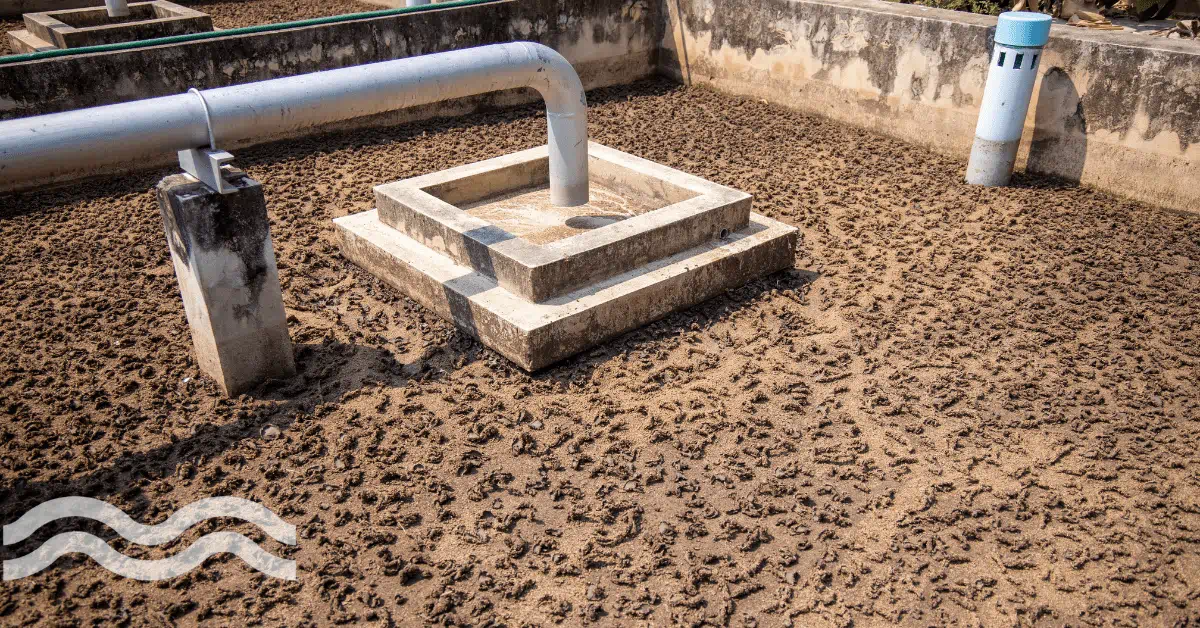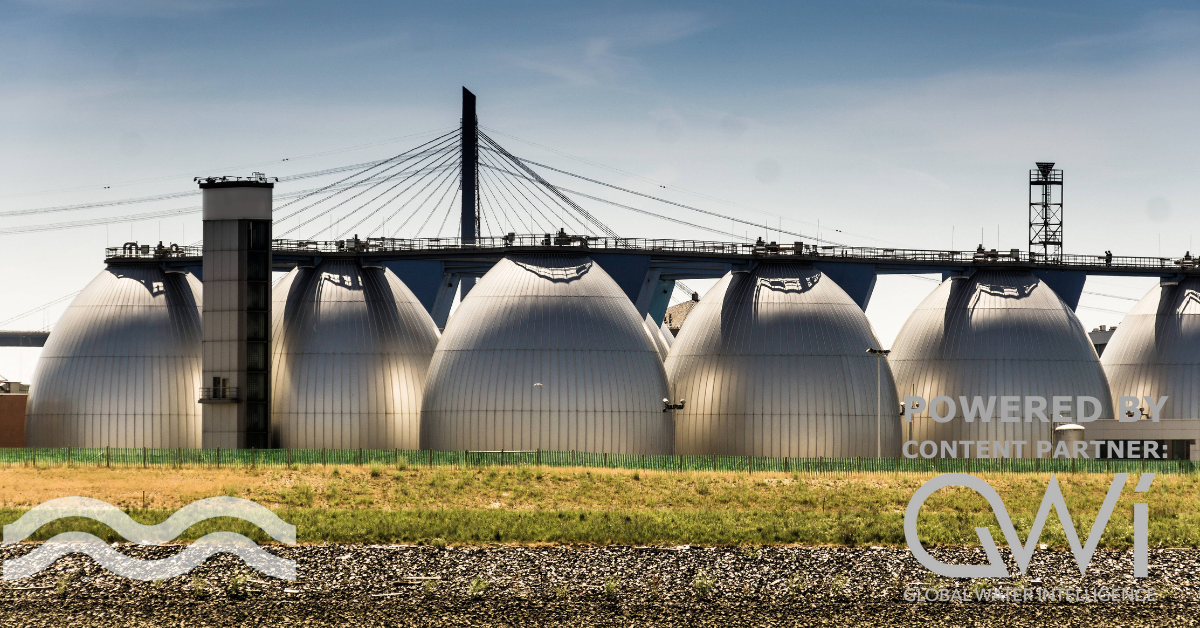As utilities continue to focus on circularity, biogas recovery from wastewater and sludge prevails as low-hanging fruit. Although biogas recovery is not a novel process, newer technologies to enhance the volumes of gas recovered have now emerged, and there is an increased focus on upgrading the product to high-quality biomethane. GWI examines the developments to the space over the last few years.
Biogas production from wastewater and sludge
In the water industry, biogas is produced from onsite anaerobic processes – with the most popular source being the anaerobic digestion (AD) of waste sludge. Anaerobic wastewater treatment also produces the gas, although the market size for these technologies is much smaller, as they are best suited to industrial wastewaters and warmer climates.
On the other hand, a large proportion of wastewater treatment plants either have a sludge digester onsite or send their sludge for digestion at another facility, as the process offers other benefits such as reducing the total mass for disposal and destroying pathogens.
Some treatment plants may choose to exploit only the sludge handling benefits of AD and flare the biogas without harnessing a beneficial use. However, the product is also widely used as an energy source onsite or exported for energy production elsewhere.
Government support and the move to biomethane
Although the most popular use of sewage-derived biogas is still to burn it in a combined heat and power (CHP) engine for energy production onsite, there is increased interest in upgrading biogas – removing the CO2 – and injecting it into the natural gas grid. Technologies that can help facilitate the upgrading of biogas into biomethane include gas stripping and the use of membranes.
Over the last few years, incentive frameworks from governments have supported this move towards providing biomethane for the gas grid and renewable transport fuel, particularly as use of fossil fuels wanes globally. For example, the European Union presented the REPowerEU Plan in 2022, in order to help end the EU’s dependence on Russian fossil fuels.
The initiative contained a Biomethane Action Plan aimed at supporting the product’s production in the future, encouraging member states to build national biomethane strategies and setting a target of 35 billion cubic meters of production by 2030. There are also many financial incentives available across the world in the form of feed-in-tariffs or carbon credit systems.

Maximising the potential
Capturing biogas from wastewater-related processes is mature in the market and happening globally. However, with an increased push towards self-sufficiency, the circular economy, and with countries seeking to move away from fossil fuels as an energy source, maximising the level of biogas recovered from utility operations is an attractive proposition. These drivers are increasing the uptake of a range of technologies that increase biogas yield.
One example is carbon diversion, which involves reducing the organic load on secondary wastewater treatment by redirecting more biochemical oxygen demand (BOD) towards the sludge line at the primary treatment stage. This means less energy is needed to destroy the organic content in the secondary treatment, and instead the organic content can boost biogas production – a twofold benefit. In its basic form, carbon diversion could involve simply adding chemicals to the primary treatment tank in order to settle more organic matter into the sludge.
However, more recent innovations include fitting physical treatment methods such as filters to the primary tank – as seen with the AquaAerobic AquaPrime pile disc filter. There is also increasing interest in biologically enhanced carbon diversion, such as setting up an A-stage process, which involves creating a small high-rate activated sludge system in the primary reactor. The bacteria in these systems take on the carbon but do not have enough time to metabolise it, instead settling out into the sludge.
Another group of technologies that seek to increase biogas yields are advanced anaerobic digestion methods. These systems are placed before digestion and increase the level of hydrolysis in the sludge, making the material more biodegradable, and therefore releasing more biogas.
The market leader is Cambi with its thermal hydrolysis process, utilising high heat and pressure to pretreat the sludge. However chemical and biological methods are also available, such as Royal Haskoning’s Helea process, that combines biological hydrolysis and pasteurisation – and offers a less energy intensive solution to the market.
Growing pressure for the future
A driver that is becoming increasingly pertinent for capturing biogas at treatment plants is the growing focus on reducing carbon emissions and meeting net zero. Anaerobic digestion is a way of intensifying and capturing the release of a proportion of gas that would otherwise be released to the atmosphere during sludge treatment and transportation – up to 45 per cent of total produced methane from the system can be diverted in this way using standard AD.
The carbon footprint of water infrastructure is increasingly in the limelight. Biogas from sludge is roughly 60 per cent methane and 40 per cent carbon dioxide. Although generally in carbon accounting, direct carbon dioxide emissions from wastewater treatment are discounted because they are biogenic (i.e. not “fossil carbon”), the release of methane is still of significant concern.

GWI research suggests that the methane emissions from water treatment and handling infrastructure (including wastewater collection and treatment, sludge treatment and onsite sanitation systems) amount to 5 per cent of global total methane emissions annually. Furthermore, methane has a global warming potential of 27x that of CO2. For utilities, capturing and re-using biogas is low hanging fruit for reducing onsite greenhouse gas emissions.
An emerging consideration for particularly high-performing utilities is the monitoring and prevention of fugitive emissions – those that are emitted from leaking infrastructure or from sludge that is being stored uncovered or in only partially-enclosed tanks. Technologies are beginning to develop for the mitigation of this, including Eliquo’s EloVac – which is not a totally new innovation to the industry but is now finding a new niche in methane recovery.
EloVac is a vacuum degassing technology that sits after the digester in order to catch a significant volume of methane that is released after digestion. Elsewhere, start-up Bluemethane is offering an agitation-based technology that helps to release the dissolved methane found in wastewater streams.
- Essential Guide to Biogas
- Co-digestion for renewable energy
- Water without carbon
- Pressure for methane mitigation methods highlights a myriad of tech solutions
- Carbon efficiency diverts interest towards enhanced primary treatment






